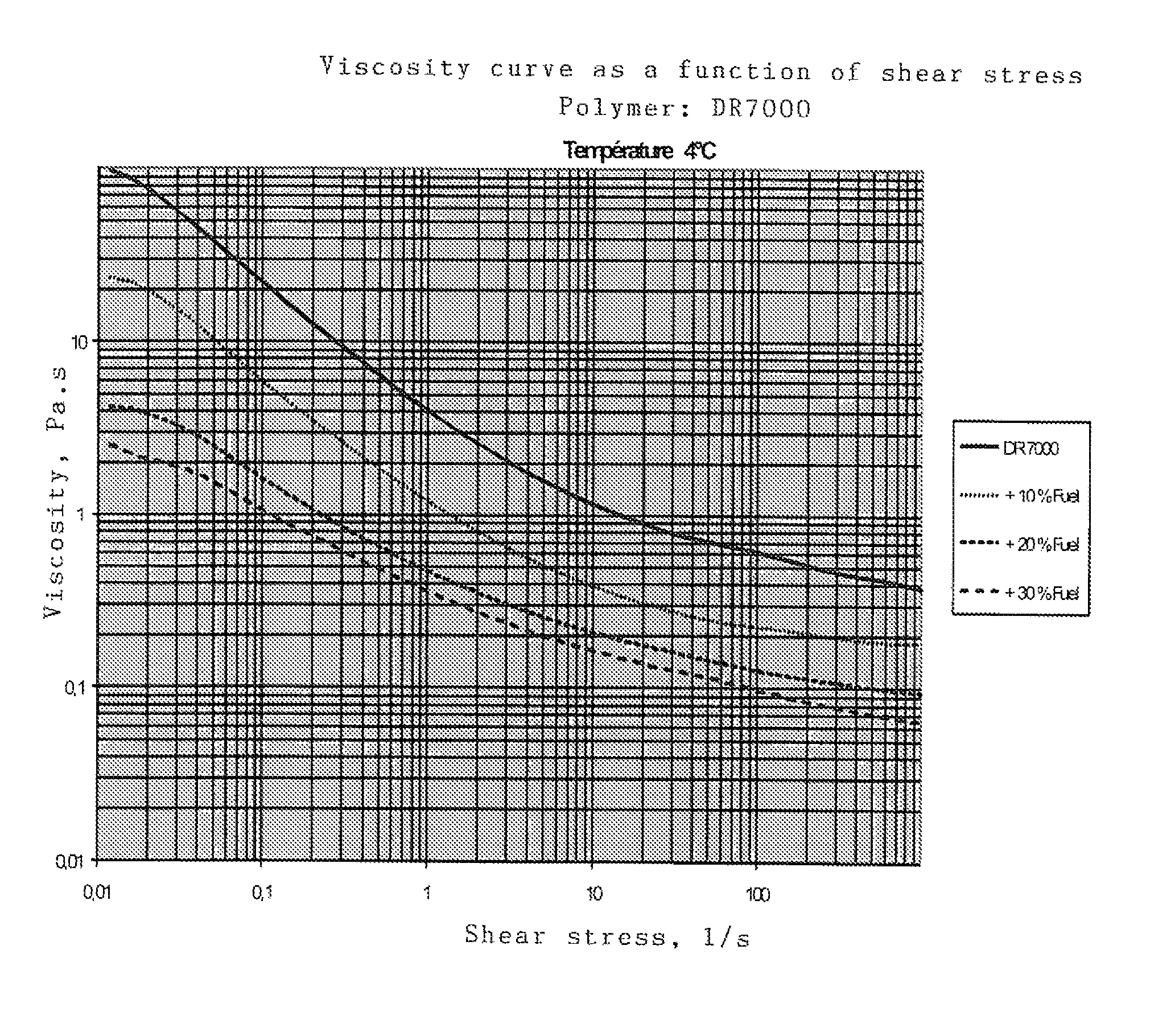Process for increasing the transport flow rate of oil from producing wells
a technology for transporting flow and oil, which is applied in the direction of fluid removal, pipeline systems, borehole/well accessories, etc., can solve the problems of reducing the efficiency of oilfield operation, limiting the flow rate in the installation, and emulsion settles very quickly, so as to increase the amount of active matter injected and reduce viscosity
- Summary
- Abstract
- Description
- Claims
- Application Information
AI Technical Summary
Benefits of technology
Problems solved by technology
Method used
Image
Examples
example 1
[0052]pipe diameter: 1 inch, inside diameter: 25.0 mm. First, the emulsion is pumped “as is” at a speed of 0.063 m / second (or 0.11 m3 / h), which is the average speed for long-distance pumping.
[0053]The pressure drop observed is 2.7 bars / 100 m.
[0054]The emulsions diluted by adding 10% and 20% fuel oil are then pumped, measuring the flow rate with the same pressure drop of 2.7 bars / 100 m. The results are as follows:
[0055]
Active matter perEmulsionFlow ratePressure drophourUndiluted0.11 m3 / h2.7 bars 33 kg10% diluted0.37 m3 / h2.7 bars100 kg20% diluted0.78 m3 / h2.7 bars187
[0056]The hourly flow rate can easily be multiplied by 7 while using the same pump and the same injection pipes. This makes it possible to inject 5 times more polymer in the form of active matter into the pipeline despite the dilution.
example 2
[0057]pipe diameter: 2 inches, inside diameter: 52.5 mm.
[0058]The results are as follows:
[0059]
Active matter perFlow ratePressure drophourUndiluted 1 m3 / h1.2 bar300 kg / h10% diluted3.2 m3 / h1.2 bar864 kg / h20% diluted6.7 m3 / h1.2 bar1608 h
[0060]This example confirms the results of example 1.
[0061]From a practical point of view, the amount of fuel oil needed for dilution can be injected using a displacement pump directly before or after the polymer pump, applying the necessary pressures, with the two liquids then passing through a Sulzer SMX static mixer giving a pressure drop of approximately 1 bar.
PUM
 Login to View More
Login to View More Abstract
Description
Claims
Application Information
 Login to View More
Login to View More - R&D
- Intellectual Property
- Life Sciences
- Materials
- Tech Scout
- Unparalleled Data Quality
- Higher Quality Content
- 60% Fewer Hallucinations
Browse by: Latest US Patents, China's latest patents, Technical Efficacy Thesaurus, Application Domain, Technology Topic, Popular Technical Reports.
© 2025 PatSnap. All rights reserved.Legal|Privacy policy|Modern Slavery Act Transparency Statement|Sitemap|About US| Contact US: help@patsnap.com

